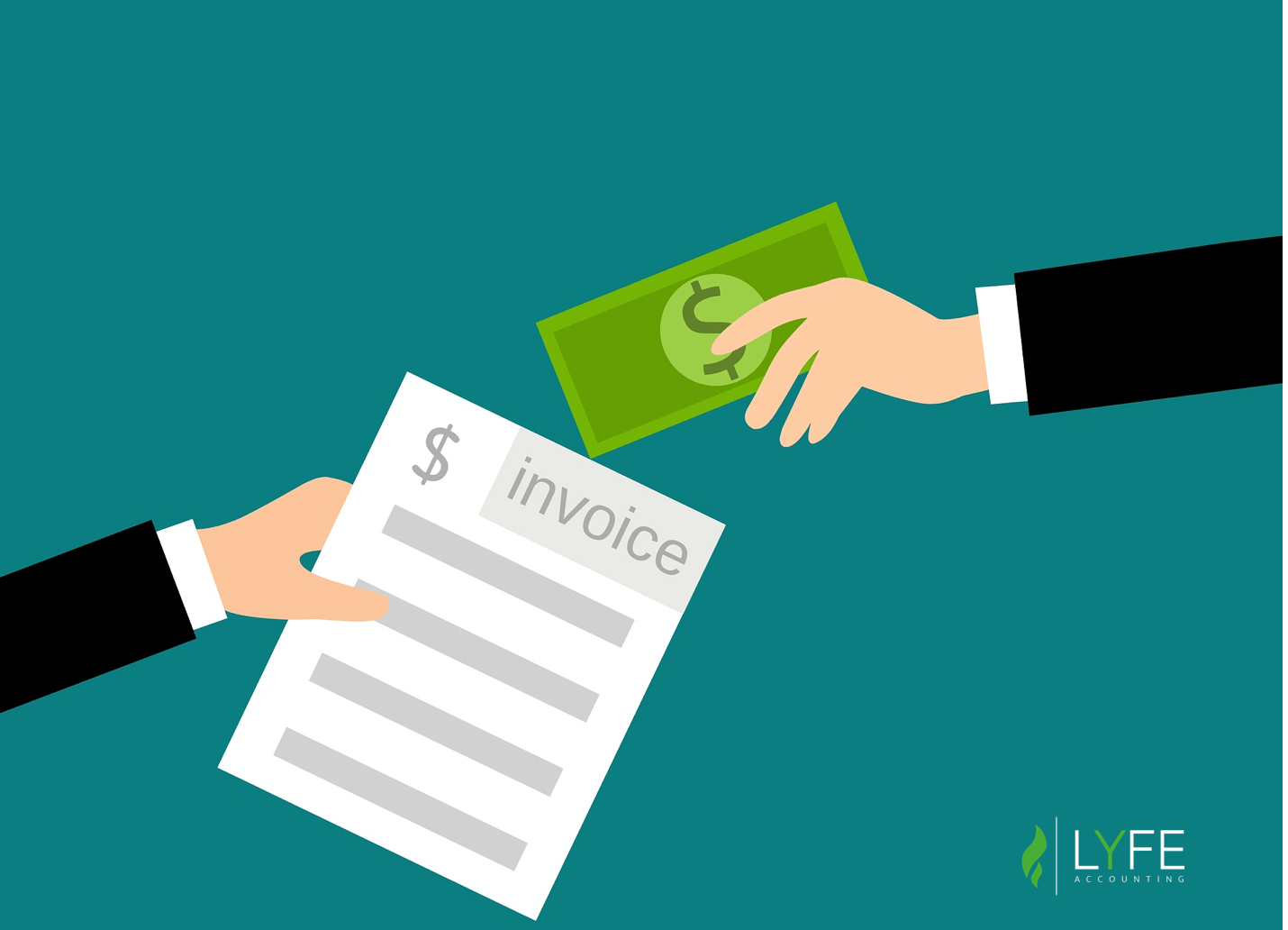Tax Mistakes You Must Avoid
Whether you just started a business or been in business for a while now, filing your taxes is a task that will never go away.
Why?
The IRS wants their money. Plain and simple.
The Internal Revenue Service (or IRS) is the collection agency for the U.S. government. The money collected on the government’s behalf is used to fund different public initiatives like health care, schools, highways, and more.
So it’s no wonder the IRS mandates virtually everyone to file and pay taxes.
With this in mind, the IRS conducts tax return audits EVERY YEAR to ensure they are getting the money they are entitled to. They pick out a handful of business and individual returns to review more closely for accuracy.
If errors or omissions are found, penalties and interest are assessed. And no one wants to pay the IRS more than what is legally required.
Criminal charges can even be brought against certain taxpayers. This typically happens in the case of fraud and tax evasion, aka PURPOSELY understating income and/or overstating expenses to avoid paying taxes.
The IRS takes this offense very seriously. Individuals convicted of tax fraud can face up to 5 years in prison and owe $250,000 in penalties! (Not including the unpaid tax plus interest).
So what does all of this mean for you?
Well, let’s start with the fact you probably should not have any tax mistakes on your return. The IRS does not take them lightly.
Most people are so fearful of the IRS, they’d rather use tax and accounting services to handle all of their tax needs.
However, it’s important for you to know, that regardless of who prepares your return, the IRS still holds you, the taxpayer, liable for any and all information reported on the form.
Most taxpayers do not understand this. So what usually happens is their accountant sends them their return to review and sign but the taxpayer only signs.
The chance for human error always exists. You should always review your return for tax mistakes, regardless of who prepares it.
Here are 6 common tax mistakes you should avoid.
1. Not Reporting Income

The IRS does not take the omission of income lightly. Tax revenue is the driving force behind the U.S. government. If no one were to report income, the government would essentially “go out of business.” So not reporting all or a portion of income could easily trigger an IRS audit.
Here is how.
Let’s say you’re a contractor and throughout the year you perform work for multiple businesses.
Under Federal law, those businesses are required to issue you a Form 1099, which reports the income they paid to you throughout the year.
Furthermore, they’ll deduct those expenses on their own tax return.
But when you receive a Form 1099, it’s because the entity that paid you also reported that information to the IRS.
Meaning the IRS knows the exact amount of income that you received and also knows the exact tax you owe!
Any income discrepancy between what you and your customers report is a red flag. And the IRS is sure to send you a letter.
Depending on the nature and amount of the tax mistake, the IRS will charge you penalties and interest.
2. Not Reporting Expenses

Not reporting all of your expenses or deductions is not necessarily considered a tax mistake by IRS standards. This would mean more money for them! But for you, not reporting all applicable business expenses and/or deductions is a costly mistake.
Think about it.
If you paid $6,500 in mortgage interest in the current year but forget to include on your tax return, you’ve just increased your tax bill by $1,820! (Assuming you’re in a 28% income tax bracket.)
Now, why would you want to give the IRS an extra $1,820 they are not entitled to?
You don’t!
This is an unfortunate tax mistake. What’s even more unfortunate is that the IRS will not send you a letter about claiming deductions that are rightfully yours.
3. Filing Under the Wrong Status.

Everyone must file under a status on their tax return. Options include: single, married filing jointly, married filing separately, head of household and qualifying widow.
It is important to file under the correct status because there are different rules and deductions that apply under each.
If you’re married filing joint, you are entitled to double the standard deduction than single filers, for example.
If you’re uncertain of your filing status, consider the facts below.
Single Filers
You are considered single if you are either:
- Unmarried
- Divorced on or before the last day of the year or
- Widowed on or before the last day of the year
Some single taxpayers qualify to be other tax statuses such as Head of Household or Qualifying Widow.
Married Filing Jointly
Married filing jointly taxpayers are those who are legally married and opt to report their income and allowable expenses on one return.
You are considered married for the entire year if you were married on or before December 31st.
Each spouse is responsible for reporting all income. And each spouse is equally responsible for tax or penalties due.
It is vital to ensure that not only your information is correct but also that of your spouse.
Married Filing Separately
Married filing separately taxpayers are those who are legally married but choose to file 2 separate returns.
This can happen for a couple of reasons.
One being, that they cannot agree to file a joint return. Or another reason being, that they are legally married but perhaps don’t live together or in the process of divorce.
Married filing separately filers, generally pay a higher tax than joint filers since certain credits and deductions are reduced or eliminated completely.
Head of Household
Head of Household taxpayers are those who are unmarried and had a qualifying dependent for more than half of the year.
A qualifying dependent could be a child, a dependent parent, or even a qualifying relative.
Only certain relatives can qualify as a dependent. You cannot claim your cousin as a qualifying dependent for example.
There are other requirements for claiming a dependent.
Another taxpayer cannot claim a dependent on their tax return. This will surely result in a rejected return. And, the dependent must have gross annual income within a certain threshold. Usually under $5,000 (though this amount changes every year.)
Qualifying Widow
A qualifying widow is one whose spouse died during the year and has not remarried.
The surviving spouse can file a joint return with the deceased spouse in the year of death. And claim qualifying widow status for 2 years following the year of death.
The Qualifying Widow must have a child, stepchild or adopted child that qualifies as a dependent and covered at least half the cost of his or her living expenses.
Make sure you file under the correct filing status or else the IRS will either reject your return or send you a letter.
If realized you filed under the wrong status, you should file an amended return.
4. Using the Standard Deduction Instead of Itemizing

Some taxpayers utilize the standard deduction, instead of itemizing. This is a tax mistake if your itemized deductions are more than the standard deduction.
First, you should understand what a standard deduction is.
The standard deduction is the portion of income that is not subject to tax. It is a flat amount which differs for single, married filing jointly, and head of household taxpayers.
On the other hand, some taxpayers itemize their deductions if they end up being higher than the standard deduction.
Some itemized deductions are charitable contributions, home mortgage interest, casualty and theft losses and more.
You can use the standard deduction OR Schedule A (Itemized Deductions). If you find that your itemized deductions are greater than the standard deduction for your filing status, definitely itemized!
Be mindful that for the 2018 tax year, the Tax Cuts and Jobs Act completely eliminates Schedule A. Instead, a higher standard deduction is expected.
$12,000 for single filers, $24,000 for married filers, and $18,000 for head of household filers.
5. Exaggerating Your Deductions

Maximizing deductions is a smart tax strategy to save in taxes. If itemizing gives you a better tax benefit than the standard deduction, then itemize!
However, there is a clear line between maximizing your deductions and exaggerating them.
Maximizing your deductions results from taking advantage of expenses that apply to you or your business.
Exaggerating your deductions results from the inflation of expenses.
The latter presents a tax mistake which could result in an audit.
On the business side, some owners may think they can deduct 100% of meals during client meetings. However, these costs are only partially deductible.
Or maybe you’re claiming a significantly higher amount of expenses this year than last year. Depending on your business and/or industry, the IRS may see this as a red flag.
Individual taxpayers can also mistakenly exaggerate deductions.
For example, there is a limitation on the number of charitable contributions you can make in a given year. Current IRS regulations place a 50% of AGI limit on charitable contributions. Claiming more than the limit will result in an IRS letter.
Exaggerating deductions will almost always raise eyebrows. It’s important to maintain receipts and supporting documentation in case a deduction is challenged.
6. Spelling Errors or Incorrect EIN/SSN

It’s not only important to get your numbers right, but also your names. This includes first, middle, and last names, business names and street addresses.
When individual names do not match with social security numbers on record, this will delay the filing process.
In most instances, returns are not initially reviewed by a human. Instead, much of this process is computer based. But in instances where a name and identification number does not match, its likely a manual review will be initiated. Meaning an actual person will review your return. And what would stop them from simply reviewing your entire return for errors?
Nothing.
And if other errors exist, your chances of being audited dramatically increases.
Tips to Avoid Tax Mistakes
Detail Review Your Tax Return Before Filing
Line by line, you should review your tax return before filing. Including your names, filing status, income, and expenses.
If you are recently married, you should make sure that the surname on the return matches what’s on the Social Security Administration records.
Check for mathematical errors too. This is mostly geared toward paper filers. It can be easy to miscalculate a number.
Double check all of your work and make sure you’re adding, subtracting, multiplying and dividing the right numbers, according to the form’s instructions.
One way to avoid mathematical mistakes is by using a tax software. Most software, computes the math for you, reducing the likelihood of errors.
Double check your banking information. Although messing this up is numerical in nature, its not an error that a tax software or even the IRS would catch.
Start Early

Don’t wait until the last minute to file your taxes. Give yourself weeks, if not, months to get organized and file. In the middle of the process, you might find that you forgot to request a certain tax document or might need more time to review.
When working in a hast, it can be easy to forget and rush things which causes more tax mistakes. It is better to take more time on the front end of your taxes, than the back end. Because on the backend, there might be fees and penalties coming your way.
Hire a Tax Professional

When in doubt, hire a professional. Hiring a tax professional can relieve alot of anxiousness you feel about filing your return on your own.
For one, they have experience and know to properly complete different forms. They have extensive knowledge on the tax code which can help you save more taxes.
If you hire a CPA, they can help you with tax planng to ensure your tax liability is as low as possible.
A tax professional can also help if issues do arise with your return, how to best settle them.
If you are considering tax preparation services or tax planning services, check out the tax services provided at LYFE Accounting. We have CPAs, enrolled agents and tax consultants ready to help you with your needs. Contact us today!

